
Energy Recovery Ventilators in Multifamily Buildings
Does Location Matter?
This author is co-chair of the BuildingEnergy 15 Conference, March 3rd-5th in Boston.
Learn more about BuildingEnergy 15: http://nesea.org/be15
Multifamily ventilation is changing. The standard practice of exhausting from the residential units and pressurizing the hallways while undercutting the unit entry doors is becoming a strategy of the past. This evolution is occurring because of code improvements (2009 IMC), requirements by optional programs like LEED for Homes Midrise, and a growing focus on more effective delivery of ventilation air.
Design teams in greater Boston are increasingly turning to energy recovery ventilators (ERVs) with fully ducted exhaust and supply air to each residential unit. From a fresh air delivery perspective, this strategy is a significant improvement over the traditional practice, in which the pathway of makeup air is largely unknown. But what about the energy performance of this technique?
The ERV for most buildings is located on the roof or in a ventilated attic because it is easy to locate and does not consume valuable conditioned space. In theory, this placement compromises the energy performance of the ventilation system in a number of ways:
-
The duct runs in unconditioned space provide an opportunity for duct leak- age and conductive heat loss.
-
When the ERV is located farther from the target spaces, there are longer duct runs, and more electric fan power is required to supply and exhaust air.
-
The unit is operating in a colder space than that for which it is rated (according to ASHRAE 84) and may not achieve the rated efficiency. If boost heat is integrated into the system, a non-condensing, 80 percent Annual Fuel Utilization Efficiency gas furnace is typically used, even when the residential units' heat source is a high-efficiency system.
-
If the ERV is located in a ventilated attic, the catwalks to the unit need to be built up so that the attic insulation is not compromised. Conservation Services Group (CSG) has initiated a study to try to add some actual numbers to the conversation about the energy performance of ERVs.
-
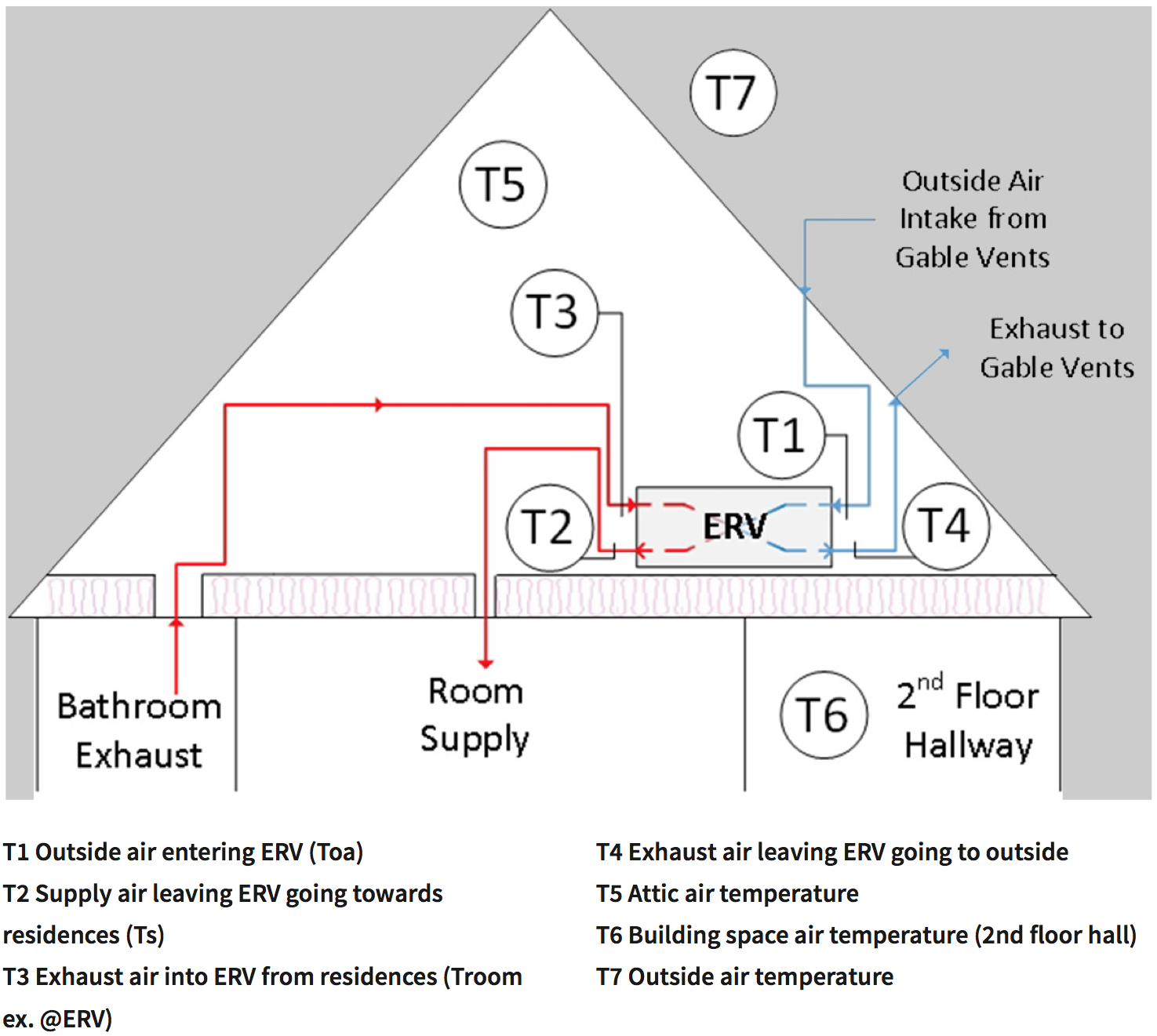
One system we have monitored is located in a ventilated attic, and serves 10 out of 26 units in the building.
The average sensible efficiency of the ERV unit was calculated to be 0.72. This efficiency represents the ratio of the heat recovered by the ERV to the total possible heat recovery at the unit, includ- ing heat from fan motors. This ratio was calculated using the following equation:
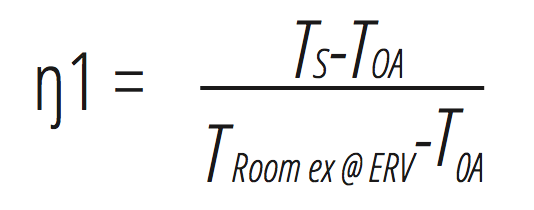
The AHRI certificate for this model lists a sensible efficiency of 72 percent at 100 percent air flow and 77 percent sensible efficiency at 75 percent air flow. According to the Testing and Balancing report (generated by a third-party contractor), the system is operating at 59 percent of capacity.
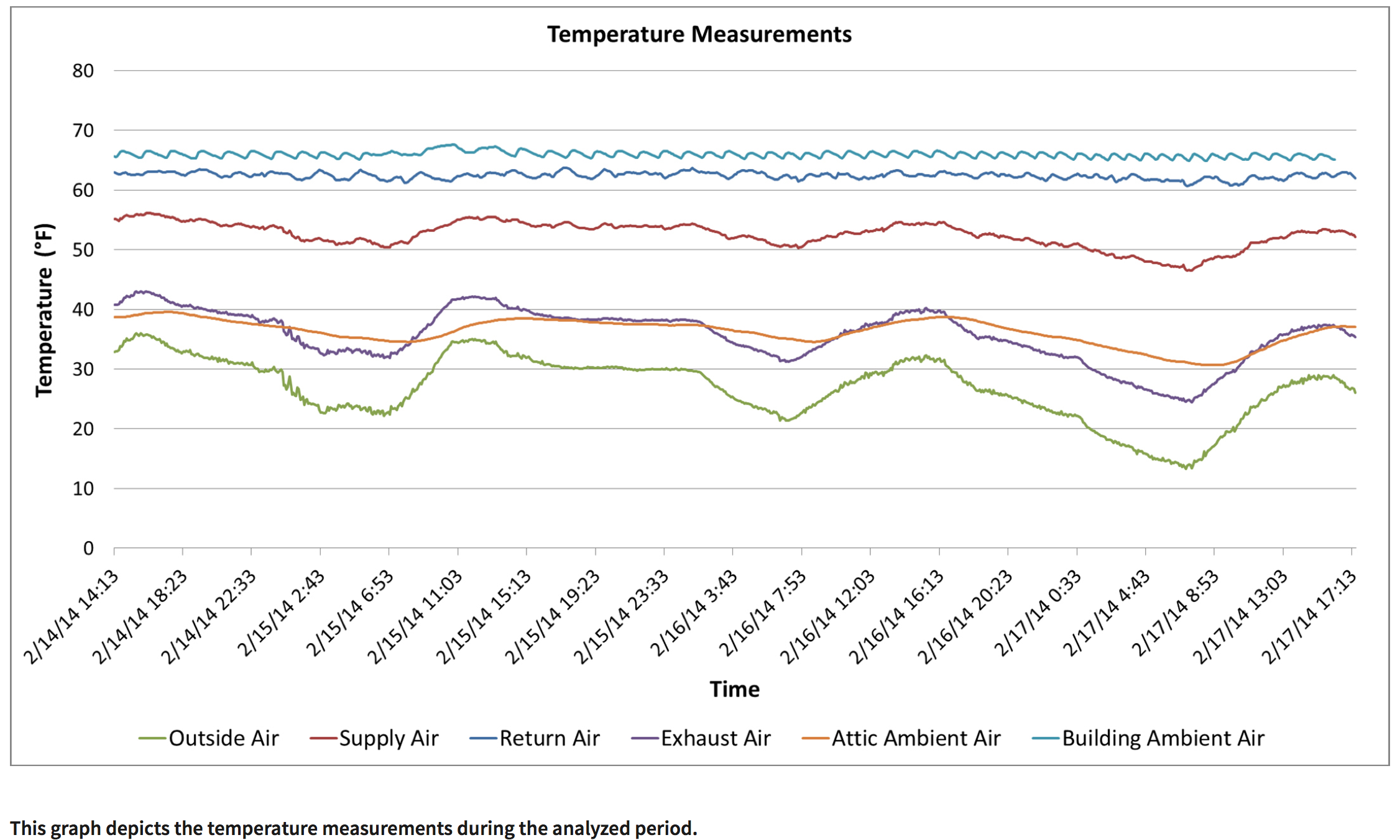
We have not drawn any definitive conclusions yet, however we have identified some interesting results in the data that will require further investigation:
• The duct losses can significantly impact the overall performance of the system. Note the average 3.6°F difference between the residential space temperature and the exhaust air entering the ERV (two lines in the chart above). This exhaust duct system heat loss reduced the overall sensible efficiency by 6 percent. This performance reduction does not include the heat loss in the distribution system on the supply side.
• The recovery efficiency of the ERV unit varies between 70 percent and 75 percent and is strongly correlated to the outdoor air temperature and attic air temperature.
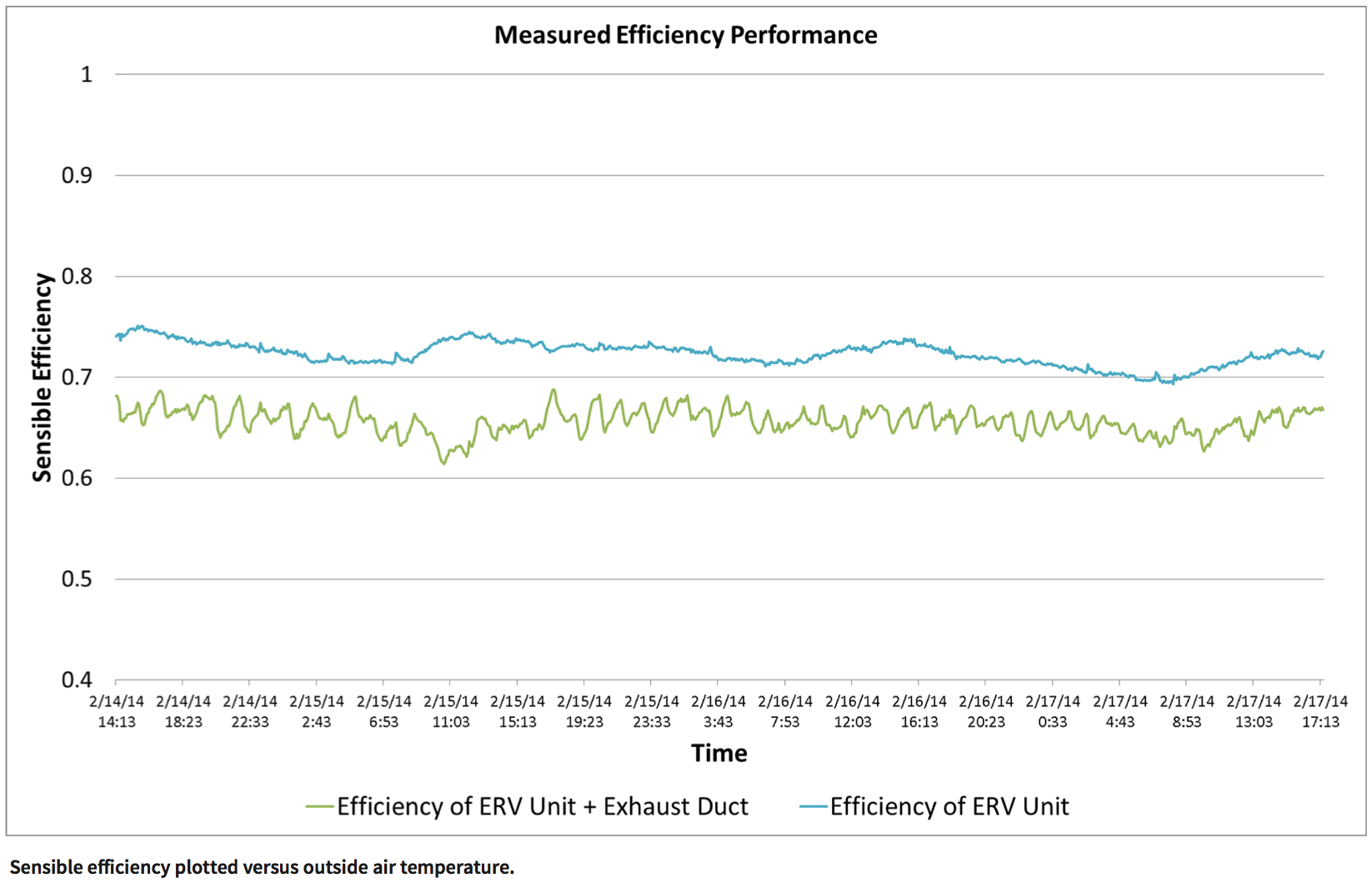
Another system we have monitored is located in the conditioned attic of a multifamily building. We had hypothesized that this system would perform better because of its location in conditioned space. However, a graph of the sensible recovery efficiency versus the outside air temperature demonstrates the need for commissioning. The data suggests that the sensible efficiency of the ERV varies between an average of 95 percent when the outside air temperature is less than 35°F and 32 percent when the outside air temperature is greater than 45°F. We believe this dramatic swing in efficiency is due not to a change in the actual performance of the system, but to boost heat from the central boiler being added to the system upstream of our temperature probe when the outside air temperature is below 50°F. The important observation is that the ERV is only operating at around 32 percent efficiency, which is not good.
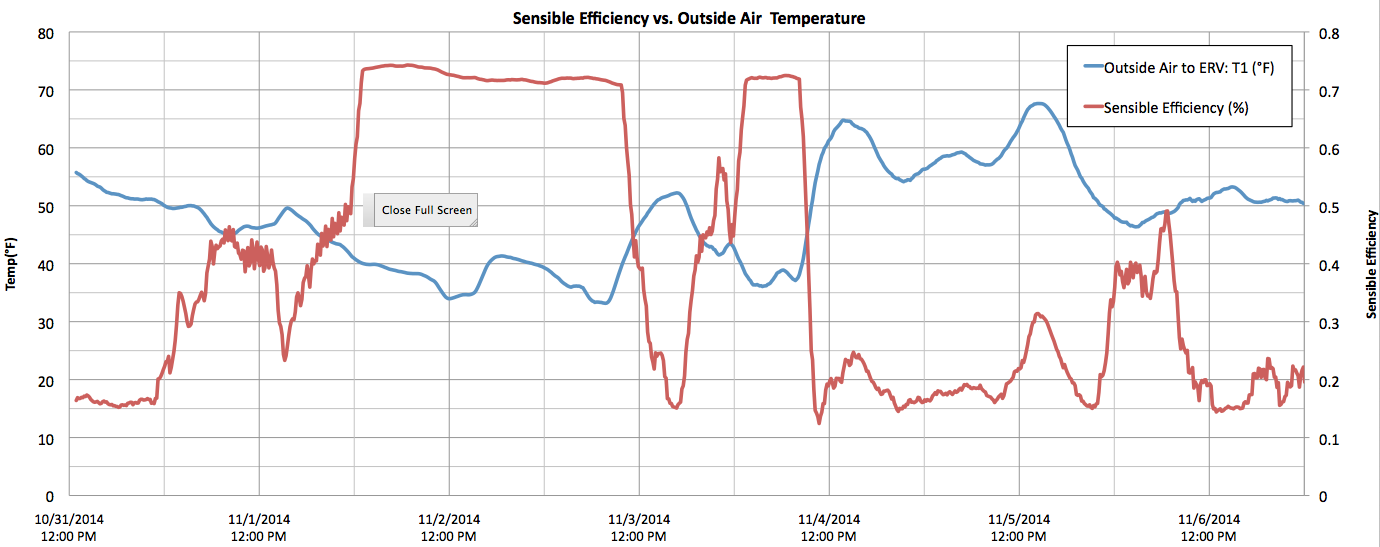
The limited data we have gathered so far is not enough on which to base definitive conclusion, but it suggests that the ERV and ductwork location should be a consideration, and proper commissioning is critical. An important next step is to quantify the ventilation energy load and compare it to the building's total energy consumption. We look forward to sharing more of our findings as we continue to collect and analyze data across a range of buildings, installation locations, and equipment types.
Learn more about BuildingEnergy 15: http://nesea.org/be15
Our Mission
NESEA advances sustainability practices in the built environment by cultivating a cross-disciplinary community where practitioners are encouraged to share, collaborate and learn.






Add comment